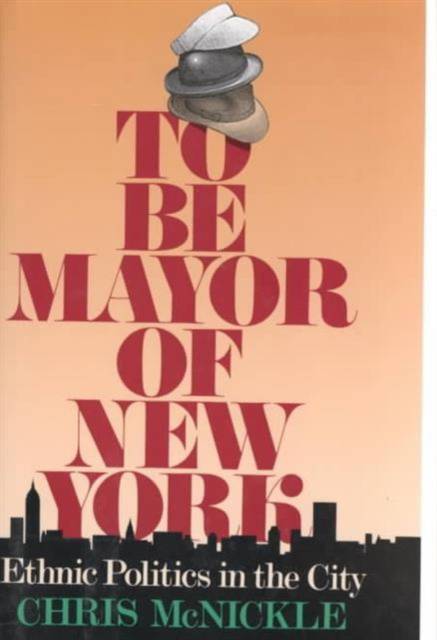
- Retrait gratuit dans votre magasin Club
- 7.000.000 titres dans notre catalogue
- Payer en toute sécurité
- Toujours un magasin près de chez vous
- Retrait gratuit dans votre magasin Club
- 7.000.0000 titres dans notre catalogue
- Payer en toute sécurité
- Toujours un magasin près de chez vous
Description
From Tammany Hall to the election of David Dinkins, To Be Mayor of New York offers insights into the effect of ethnic competition on the demise of urban political machines.
Beginning with a colorful assessment of New York City's Tammany Hall as it existed in the late nineteenth century, McNickle traces the effect of the arrival of large numbers of Jewish and Italian immigrants -and later black and Puerto Rican migrants- on the Irish-dominated political machine. He focuses on the political passage of Jewish immigrants through the various small parties unique to New York -socialist, American Labor, and Liberal. Later he describes their attraction to various factions of the traditional Democratic and Republican parties. He spotlights the willingness of large numbers of Jewish voters to cast ballots for third-party candidates on the basis of their shared philosophical commitments and political priorities. McNickle then examines mayoral campaigns between 1945, the end of the LaGuardia era, and 1989, during which the Irish receded and Jews and later African-Americans emerged as the most important ethnic groups in local politics. To Be Mayor of New York offers the most complete study of the development of Jewish political participation in New York. Placing a rise of the New York City Reform Movement in historical perspective, the author explains the election of New York's first Jewish mayor, Abe Beame, and the first African-American mayor, David Dinkins, as part of the political evolution of both these groups.Spécifications
Parties prenantes
- Auteur(s) :
- Editeur:
Contenu
- Nombre de pages :
- 403
- Langue:
- Anglais
- Collection :
Caractéristiques
- EAN:
- 9780231076364
- Date de parution :
- 03-06-93
- Format:
- Livre relié
- Format numérique:
- Genaaid
- Dimensions :
- 161 mm x 236 mm
- Poids :
- 693 g

Les avis
Nous publions uniquement les avis qui respectent les conditions requises. Consultez nos conditions pour les avis.






